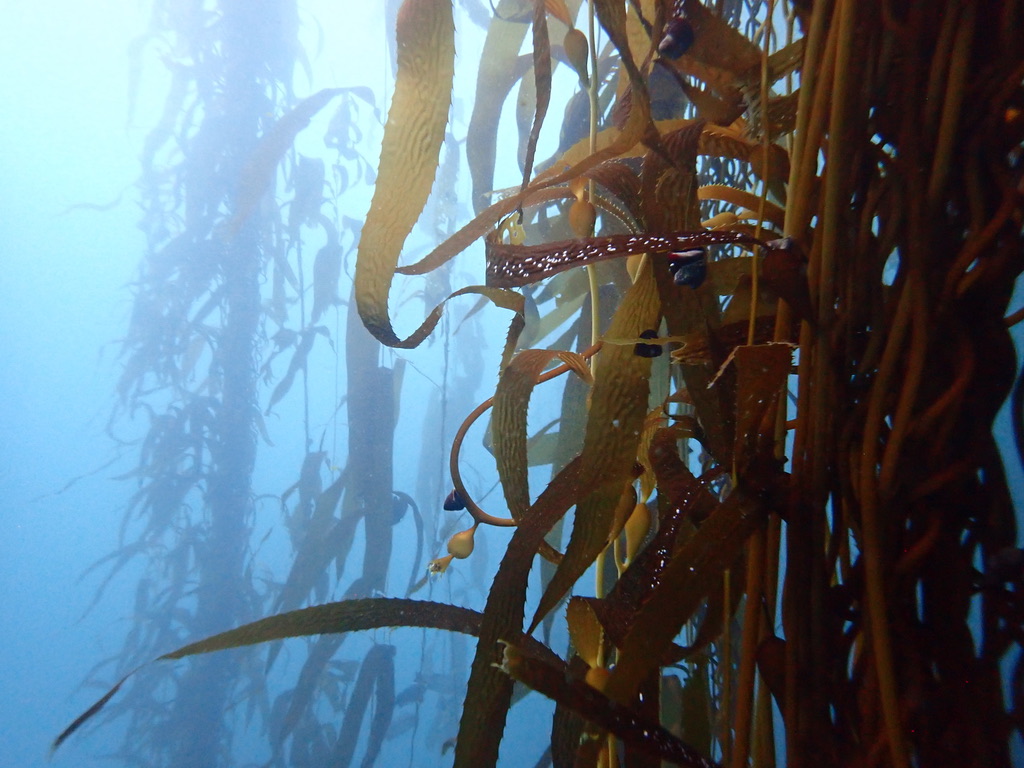What is Blue Carbon?
The world’s salt marshes, seagrass meadows, and kelp forests have carbon-storing superpowers, giving us yet another reason to protect and restore these ecosystems.
By now, the concept of planting trees to offset carbon emissions is familiar to most. Through photosynthesis, trees absorb carbon dioxide from the atmosphere to form the sugars they need to grow, offsetting the carbon dioxide pollution in the air. The same concept applies to our ocean’s plants and seaweeds: by converting sunlight into sugars, the ocean’s vegetation also hides away carbon dioxide from both air and seawater. Together, the ocean and coastal ecosystems capable of storing carbon are referred to as “blue carbon”.
While underappreciated, coastal plants are remarkably efficient at storing carbon. Thanks, in part, to the consistent inundations of water received by marsh, seagrass, and mangrove habitats, the soils in which these marine plants grow remain consistently strapped for oxygen. To survive, these coastal plants have adapted to send oxygen down to their roots, allowing for continued growth despite the lack of oxygen below ground.[1] However, the scarcity of oxygen prevents the soil’s microbes from consuming the carbon buried in the soil. Instead, much of the carbon these coastal plants accumulate underground remains untouched.
The shape of coastal plants further enhances their ability to generate blue carbon. As seawater flows through these marsh, mangrove, and seagrass ecosystems, the plants catch particles floating by like dust on a fan blade. Among these particles is more carbon, which also ends up buried in the surrounding soil.[2]
A Double-Edged Sword
The world’s seagrass meadows, salt marshes, and mangrove forests store so much carbon, they are actually on-par with the world’s rainforests! But along with the ocean’s carbon-storing superpowers comes great responsibility. Like rainforests, these coastal ecosystems release their stored carbon when they are degraded. Despite their importance, these coastal ecosystems continue to be lost ten-times faster than tropical forests.[3]
Time for Restoration
The good news is that restoring these ecosystems comes with added benefits. By generating more seagrass meadows, mangrove forests, and salt marsh habitats, we can both recreate vital wildlife habitat while also reinstating an important component of the world’s natural carbon storage system. Plus, the presence of coastal vegetation can help combat coastline erosion and flooding, which are becoming an increasing problem for shoreline communities.
However, restoring these carbon-storing habitats is not cheap. Due to the high costs of restoration, the income generated from carbon credits can be essential to making restoration projects financially viable. WRA provides a variety of services to assist our clients in their restoration and conservation endeavors. WRA’s Conservation Strategies team assesses properties for carbon, wetland and species crediting potential through ecological, market and financial analyses. These projects can often be implemented in tandem with the landowner’s ongoing operations, providing a valuable additional source of revenue and generating positive ecological outcomes. WRA has played a role in developing over twenty wetland and species mitigation banks, conducted seventy environmental market assessments across the country, and has helped develop innovative forest and wetland carbon crediting programs.
Looking to Partner?
At WRA, we have experts ready to help with the design, permitting, and implementation of restoration projects. Our biologists, permitting experts, and landscape architects have experience in a wide variety of ecosystems, including terrestrial, marine, estuarine, and riverine habitats. We also have a landscape restoration team ready to do what it takes to implement your restoration project!
Want to learn more about WRA’s restoration projects, land monetization studies, or mitigation bank partnerships? We’d love to hear from you!
References
[1] Brodersen, K. E., M. Kuhl, D.A. Nielsen, O.P. Pedersen, and A.W.D. Larkum. 2018. Rhizome, Root/Sediment Interactions, Aerenchyma and Internal Pressure Changes in Seagrasses. Seagrasses of Australia. Springer, Cham. https://doi.org/10.1007/978-3-319-71354-0_13
[2] Duarte, C.M., I.J. Losada, I.E. Hendriks, I. Mazarrasa, and N. Marba. 2013. The role of coastal plant communities for climate change mitigation and adaptation. Nature Climate Change. 3: 961-968. https://doi.org/10.1038/nclimate1970
[3] Duarte, C.M., W.C. Dennison, R.J.W. Orth, and T.J.B. Carruthers. 2008. The Charisma of Coastal Ecosystems: Addressing the Imbalance. Estuaries and Coasts: J CERF. 31: 233-238. https://doi.org/10.1007/s12237-008-9038-7





